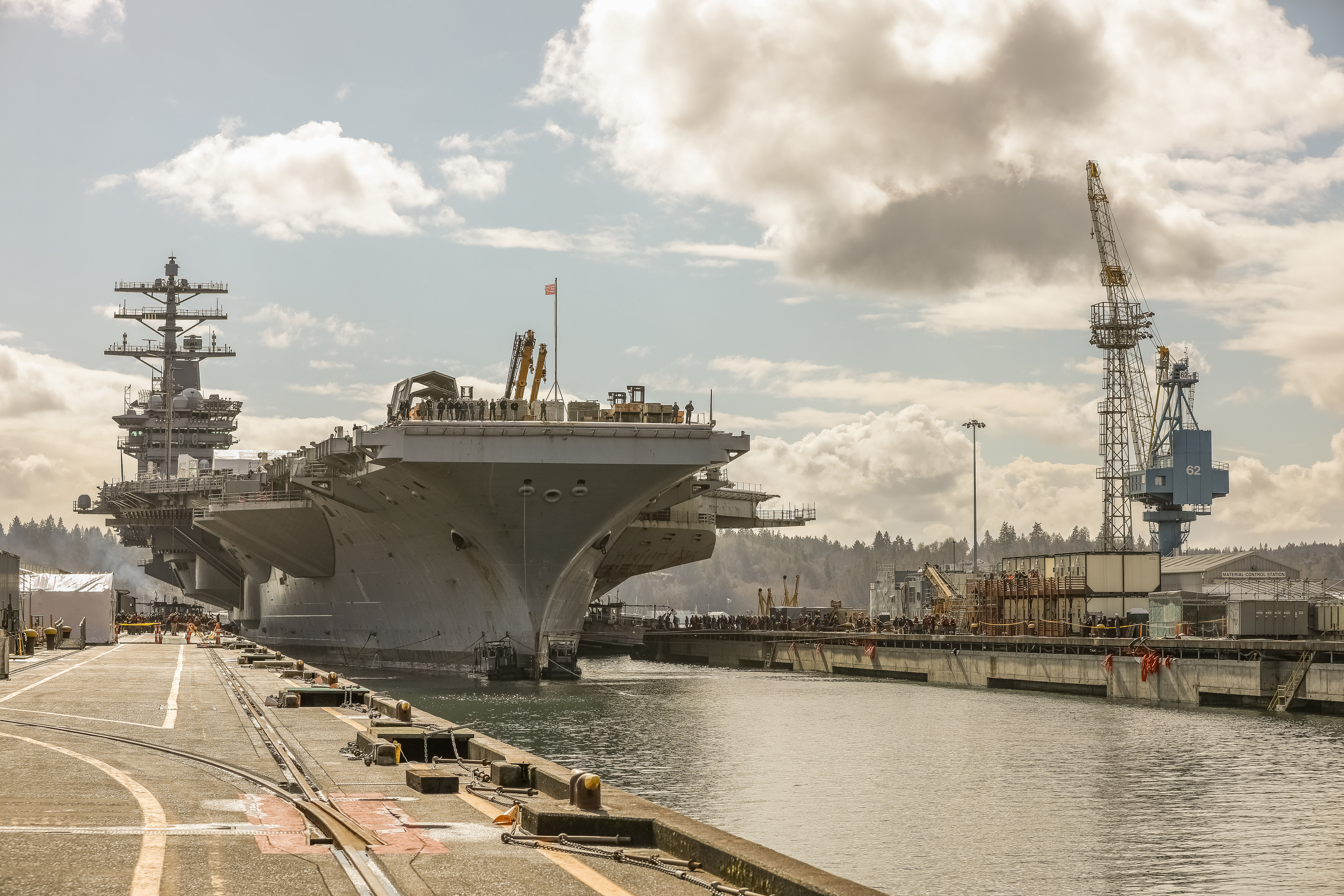
This post has been updated to include the redacted executive summary of NAVSEA’s shipyard optimization plan.
WASHINGTON NAVY YARD – The Navy plans to build momentum for its 20-year, $21-billion ship repair yard modernization plan through key early wins: proving that a redesign of the yard in Maine translates to a substantial increase in productivity, and renovating drydocks to accommodate the Navy’s newest nuclear-powered submarines and aircraft carriers.
The service wants to overhaul each of its four yards – Norfolk Naval Shipyard in Virginia, Portsmouth Naval Shipyard in Maine, Puget Sound Naval Shipyard and Intermediate Maintenance Facility in Washington, and Pearl Harbor Naval Shipyard and IMF in Hawaii – to make them efficient enough to care for a growing Navy fleet. Main areas of improvement include renovating the drydocks, redesigning the yard to create a more efficient layout for workers, upgrading capital equipment, and inserting new technologies to create productive and modern shipyards.
The Navy is currently in the process of working with a civil engineering firm to draw out what the final end state will look like at each of the four public shipyards, and will then determine how to plan the work around one-year budget cycles, Naval Sea Systems Command commander Vice Adm. Tom Moore told USNI News.
“We’re not going to get $21 billion in one year to go do this, nor could we execute that amount of money, so … we’ll go do that work in a way that allows us to get the most important work done as quickly as we can to get the biggest return on investment to the taxpayer, and then also takes into account work that’s ongoing in the yard,” he said in an August interview.
“One of the important things we have to work with the civil engineers and NAVFAC (Naval Facilities Engineering Command) on is, once we’ve settled on this is the end state of what we want this to look like, is then to go integrate the existing work in those shipyards – because we can’t stop doing maintenance. … How do we go relocate the shops, upgrade the facilities, upgrade the drydocks and do that in a way that doesn’t disrupt, completely disrupt, the maintenance?”
Moore stressed that the order in which the work would be done would prioritize both the most important work – enlarging and strengthening the drydocks to accommodate the Ford-class carriers and the Block V Virginia-class attack submarines with the Virginia Payload Module extension – as well as quick wins that would prove to Pentagon leadership and lawmakers on Capitol Hill that the investment in the yards is worth the cost.
“That’s going to be the challenge, for sure, is to keep people interested over a 20-year period. For anything that’s a challenge. I think the selling point to everybody has been … if you want to get to a force of 355 (ships) and you want to be more productive going forward, this is a key component of it,” Moore said.
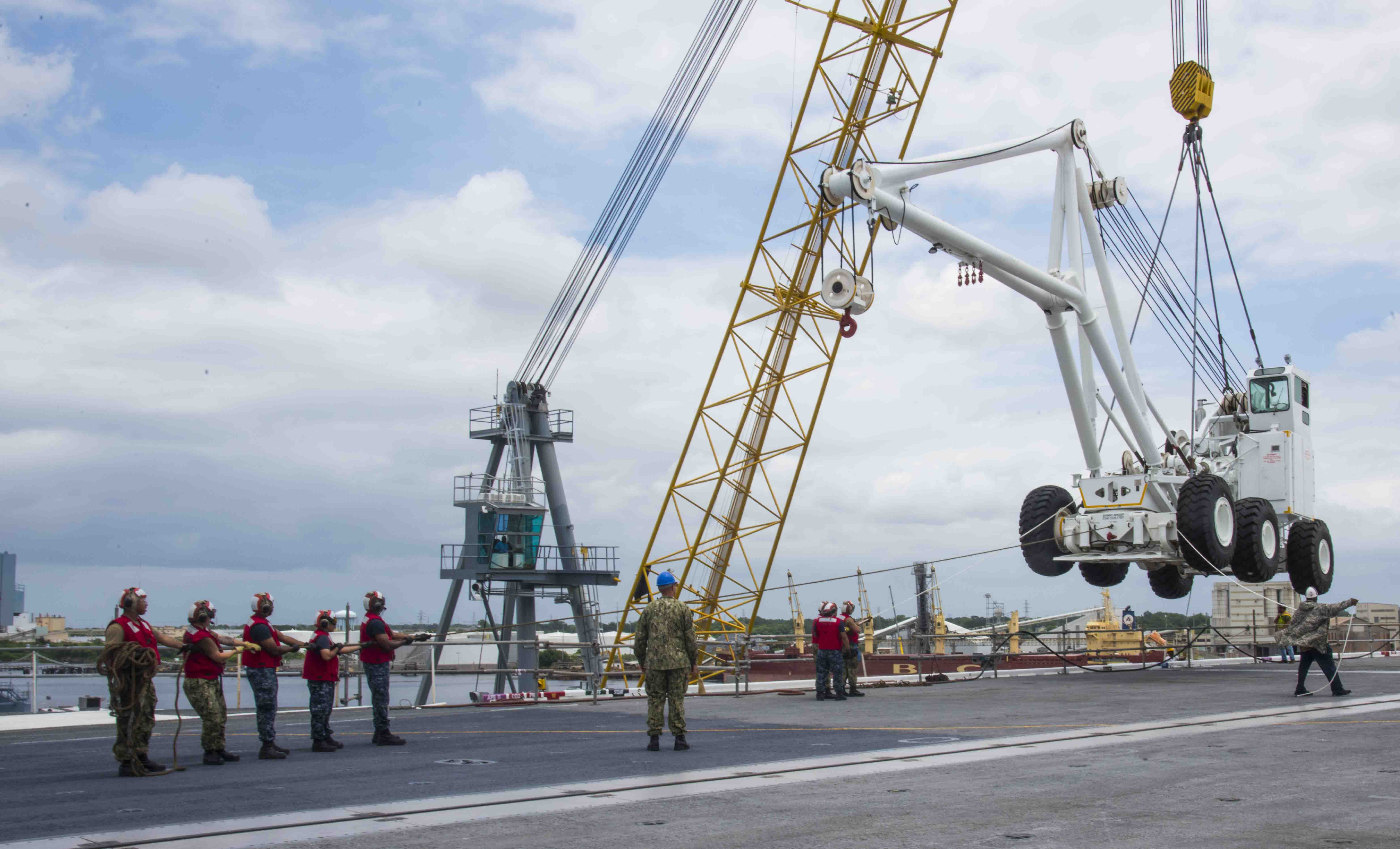
Though he noted each yard has a constituency in Congress that could help fight for the funding, winning over the larger legislative body will require the Navy to demonstrate the value of the work – chiefly through getting carriers and submarines in and out of maintenance availabilities on a shorter timeline and without further growing the workforce. Moore said he was eyeing an aggressive schedule, with funding ramping up to about a billion dollars a year by 2022 or 2023.
“We’re going to have to each and every year demonstrate continued progress in this, and demonstrate that this is an investment that’s worthwhile to the Navy. The reason it was so enthusiastically supported by Navy leadership and on the Hill was because we think the return on this investment is significant over 20 years for many many reasons. There’s parts of this that have to be done no matter what – you gotta do the drydocks, that’s kind of a no-brainer. The biggest part of it, probably 70 to 80 percent of the cost, is in laying out the shipyards differently, that’s the one that we’re going to have to continue to demonstrate. As we make these changes, we can show, look, look how much better Portsmouth is today.”
New Technologies and Equipment Recapitalization
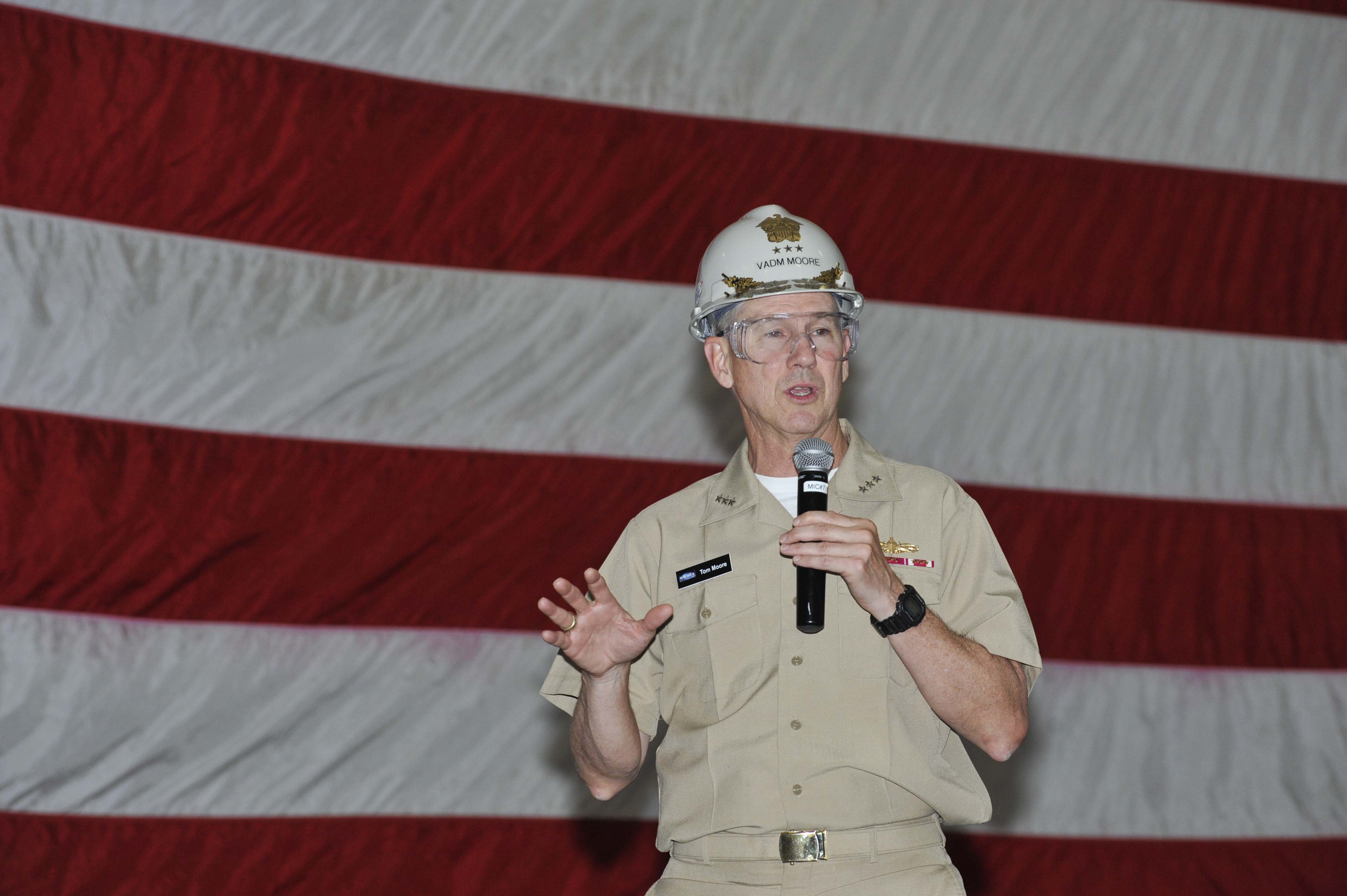
While the layout redesign takes place, Moore said there would be an opportunity to invest in new capital equipment, which the Navy tends to replace every 20 to 25 years compared to the industry average of 10 to 12 years. Though most of that recapitalization will take place as shops are moved later in the 20-year renovation effort, “there are probably some near-term wins we can get after today in terms of buying capital equipment that we can get into the existing production shops. I don’t want to wait to move the shops if I can go buy equipment today –welding machines, things to work on shafting, et cetera – that will help, and then we can get started with that stuff and we’ll move them when we need to.”
Moore said NAVSEA is also eyeing what new technologies can be added to the shops and to the shipyard overall to move toward digital shipbuilding. A team will spend the next four to six months studying innovations across the private industry to understand what ideas could be applied to the four yards.
“As we go into the digital age here, how do we incorporate digital technology into the shipyards?” Moore said, noting that “part of the plan will incorporate a lot more additive manufacturing into the shipyards. While the technology isn’t quite advanced enough yet for the Navy to rely on 3D printing in its work at the repair yards, “by the time we start rebuilding these shops over the next five to 10 years, I have no doubt that you’re going to see additive manufacturing be an integral part of a lot of the work that’s being done out there.”
Additionally, Moore noted that Huntington Ingalls Industries’ Newport News Shipbuilding yard in Virginia has had success inputting digital ship product models into steel-cutting machines that can then cut very precisely. The machines can also etch into the steel where studs would go, instead of sending a worker out with a ruler and chalk to mark out as many as a thousand spots for studs – which leads to a good chance of mistakes being made and re-work being required. Moore said the Navy was very interested in bringing this technology and process to its public repair yards.
“As we move to electronic work documents, we’re going to be looking at how do we incorporate more Wi-Fi. We certainly have to take into account cybersecurity, but there is no doubt that we need to get to a place where we could get away from paper; get down on the deck plate with some tablet that would allow the worker to look at the work document right there, actually hold it up and it would give him where he’s got to work. It would tell him the bill of material – if he starts to work and a material is missing, what we’d like to do is eventually get to the point where he could get on his tablet, hit a button that says hey I need this material and have it delivered to the ship so he didn’t have to leave the worksite. Some sort of FaceTime technology where he could perhaps get an engineer up in one of the shops that says hey I’m down on the ship right now, here’s what I’m seeing, can you give me an engineering recommendation? Where today you’ve either got to call the engineer down, or you’ve got to take some pictures and go back up to the engineering shop. So you could certainly envision a day where the technology we’re going to put in there would allow us to more real-time do work on the deck plate and not have to stop work,” Moore said.
“Is there a way to use drones? You can’t get the drone on the ship, but is there a way for us to move material throughout the yard more efficiently than we’re doing today? We’re looking at all of that. We’re going to learn a lot from not only the big yards that are building stuff; I want to look worldwide at the private sector, other shipbuilding throughout the world to see what technologies they may be using that would improve our ability to make the right investments as we go forward.”
Increased efficiency
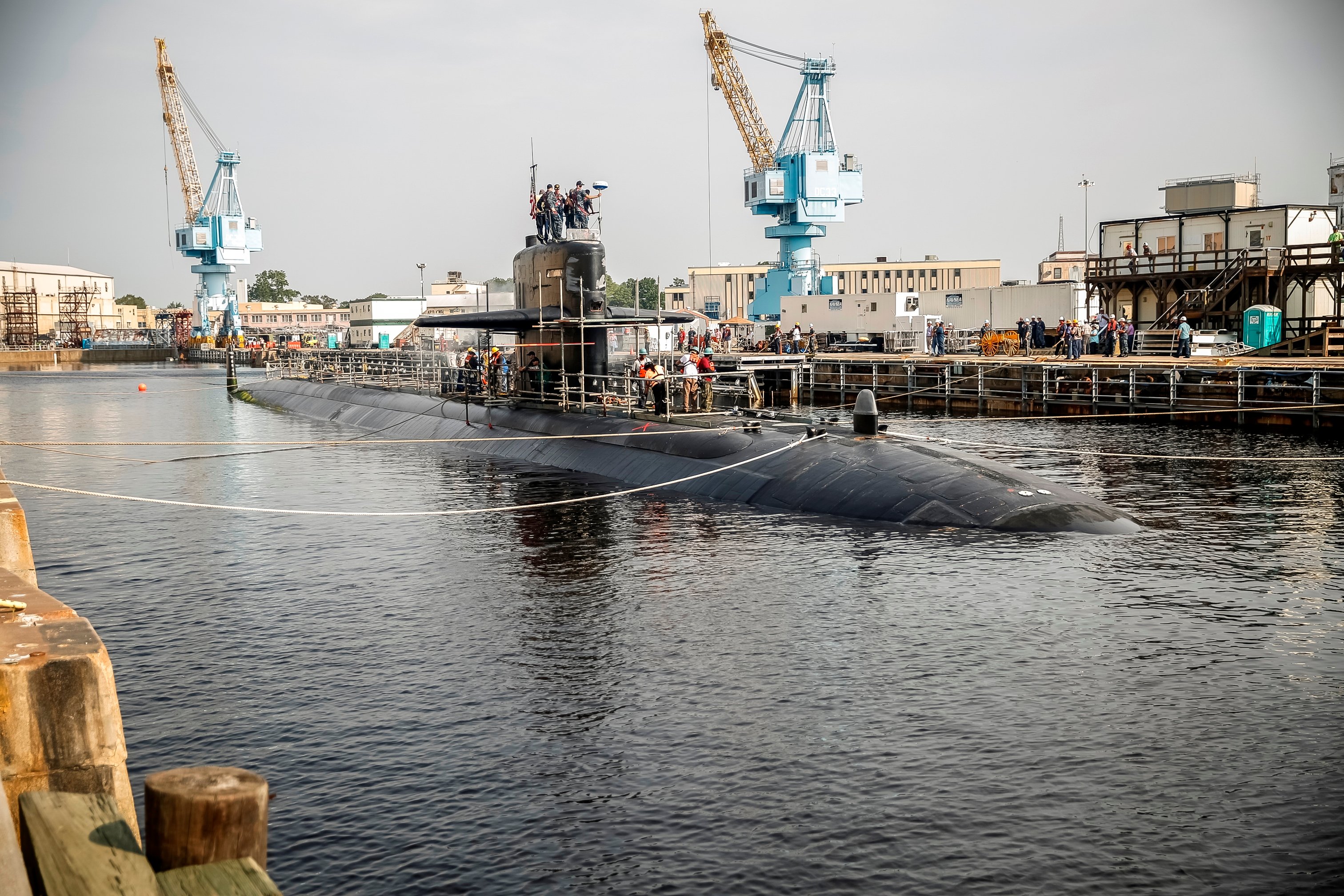
Ultimately, Moore said he hopes to minimize the disruption to the work schedule, which is already mapped out for years to come, but he acknowledged that won’t be entirely possible, especially when the drydocks are being worked on.
“We’d like to stick as much as is practical to the current maintenance schedule, but realistically we’ll work very closely with the fleet and move availabilities around – and there’s a high probability some availabilities will have to move around a little bit in order to accommodate that work,” he said.
In the end, though the Navy should be able to support a larger fleet with the same number or fewer workers at the four yards, and without having to build any additional drydocks, only improving the ones it currently has.
“Having these double docks and having more flexibility is going to be helpful. We don’t need a lot more drydock space, we’ll be able to manage the drydocks going forward,” Moore said.
NAVSEA is in the midst of growing its shipyard workforce up to 36,100 personnel. As the Navy builds up to 355 ships, Moore said that equates to only nine more nuclear-powered subs and carriers than are in the fleet today, and he does not intend on NAVSEA having to hire any additional personnel to work on them – the increased efficiency that will come from the yard redesign and the new equipment should allow the ships to cycle through faster with the same workforce.
Portsmouth Naval Shipyard
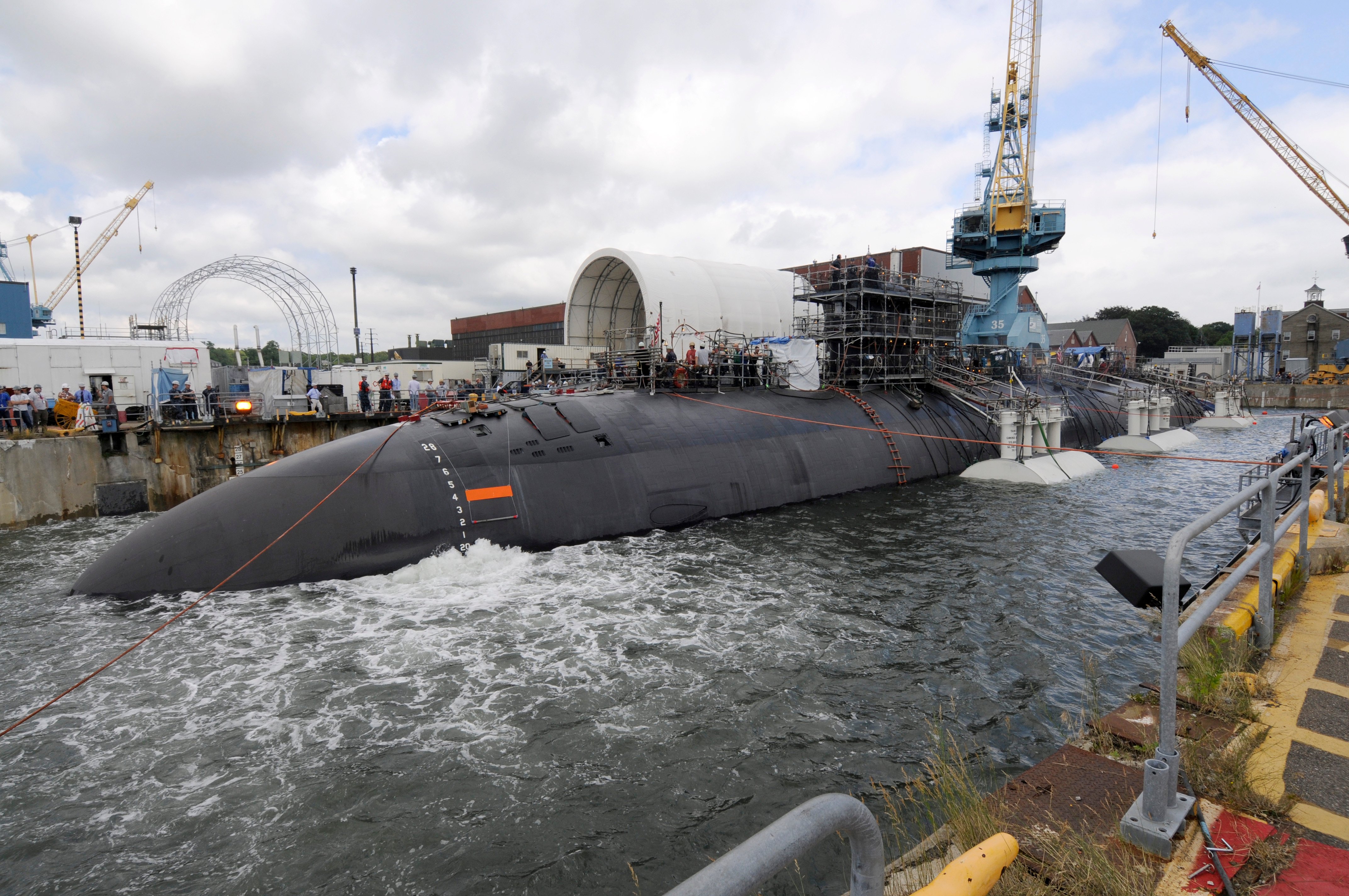
Portsmouth Naval Shipyard is the smallest of the four but was the first to bring the idea of redesigning the yard to Navy leadership’s attention. Moore said he visited the yard shortly after taking command of NAVSEA in June 2016, and the workforce there noted that the yard had been originally built for ship construction rather than ship maintenance and was not laid out in a logical way for today’s mission.
Chief among the issues at Portsmouth is that the drydocks can only bring in new submarines in certain tides, forcing the Navy to work around environmental factors rather than moving boats in and out according to their own needs.
“Portsmouth for many many many years, because of the tides there, has had to use what we call buoyancy assist modules – they essentially were big floating cans that we put straps on the submarine and helped lift the submarine up higher out of the water to get it above the drydock sill,” Moore said.
“So the drydock will be lowered so we don’t have the tide restrictions to get the boats in and out of there, which is always an issue up at Portsmouth – there’s only certain times of the month with certain tides you can get a submarine in, so it gives us a lot more flexibility.”
The yard today primarily works on Los Angeles-class attack submarines. As those decommission and the newer Virginia-class subs – and especially those with the Virginia Payload Module – make up a larger percentage of the attack sub fleet, the larger drydocks at Portsmouth will be able to double-dock earlier Virginia-class SSNs and single-dock the Virginia Payload Module boats.
Moore said work on upgrading the drydocks at the 218-year-old shipyard is “substantially underway” with Fiscal Year 2016 and 2017 funds, and that some work has already started on relocating shops and creating a more efficient layout. Being the smallest and most compact yard, the admiral called Portsmouth “a good test case” for the yard layout optimization effort.
Norfolk Naval Shipyard
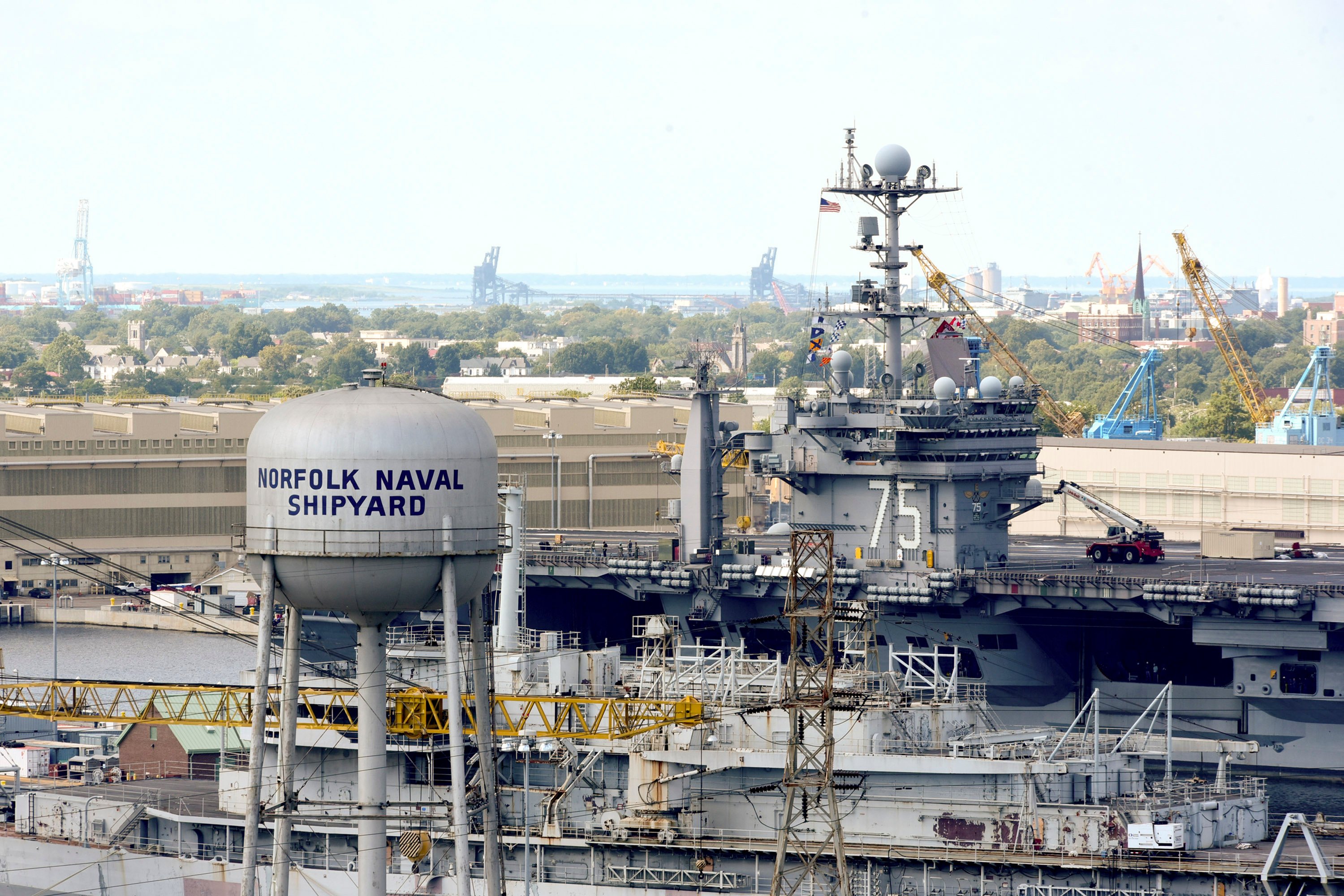
Norfolk is the largest of the four yards by area and works on all submarines and aircraft carriers. Being the largest, though, exacerbates the inefficient yard layout that Moore and his team hope to address.
“The workforce walks the circumference of the earth every day getting to and from the worksite,” Moore said, noting a 6-percent inefficiency in their time spent walking around the yard that could be eliminated with a more appropriate flow from the shops down to the drydocks.
On the drydocks, Moore said, “Norfolk has had some ongoing flooding issues over the years with the Elizabeth River during storms and high tides. We’re taking some steps to fix those drydocks to help with that.”
Additionally, “for the Ford-class carrier, we’ve got to take the carrier dock there, we’ve got to upgrade it. We’ve done the power upgrades, and now we’ve got to go upgrade the sea water capabilities so that when the ship comes in we can provide cooling to the ship systems.”
Puget Sound Naval Shipyard and IMF
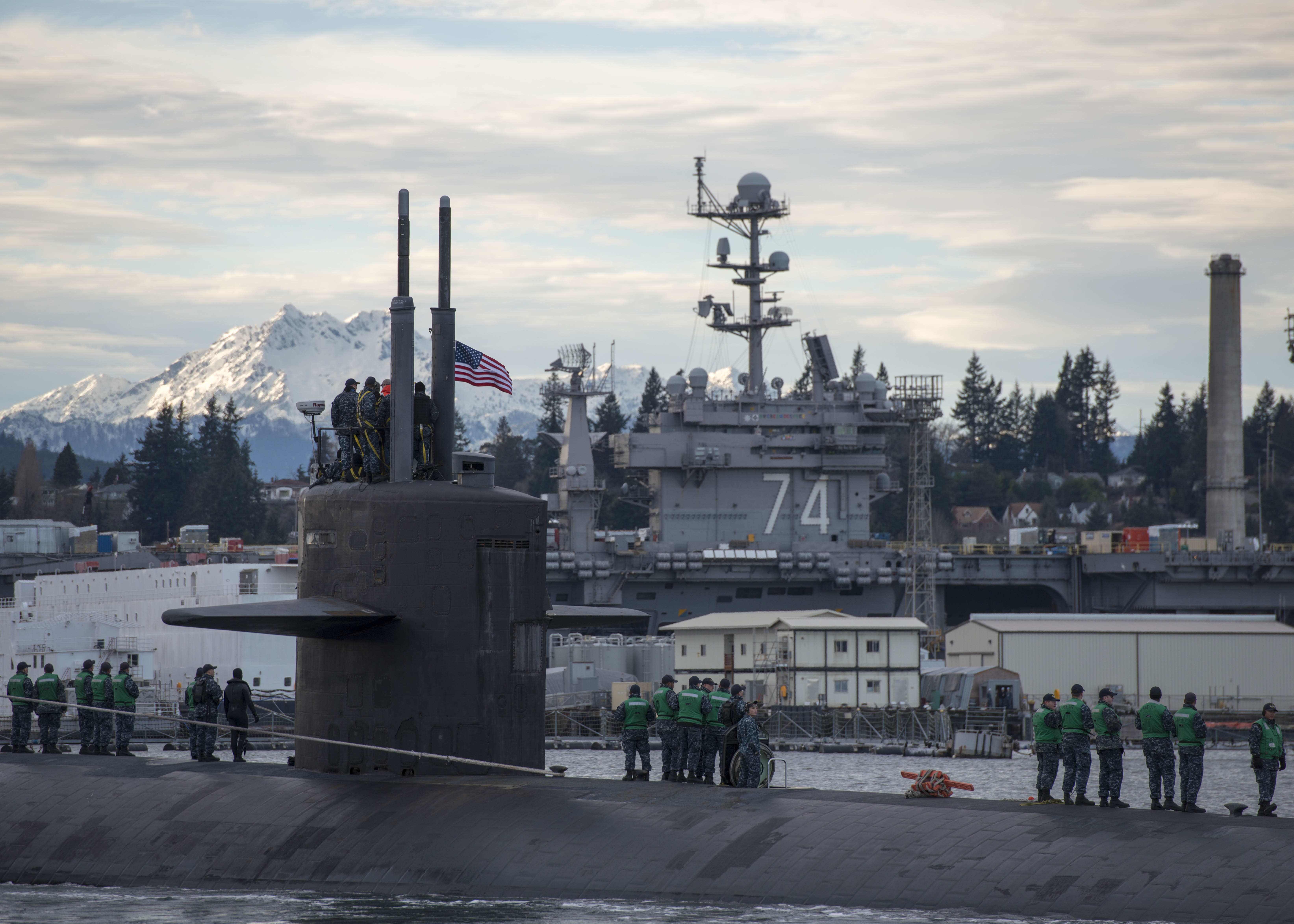
Like the other shipyards, Puget Sound will need its drydocks expanded to handle the Virginia Payload Module boats. Unlike the other yards, Puget has “some significant seismic issues” that need to be addressed for the shipyard that sits on a major fault line. Moore said that, though no major earthquake has hit there in more than 300 years, Puget is the only carrier repair facility on the West Coast and the Navy cannot afford to risk the yard being damaged by a major earthquake.
“While we are going to upgrade the dock, at the same time there are some significant seismic upgrades we’re going to do to the drydock at the same time that will allow us to operate up there in any other than just a catastrophic earthquake but would manage most anything we expect to see,” Moore said.
Pearl Harbor Naval Shipyard and IMF
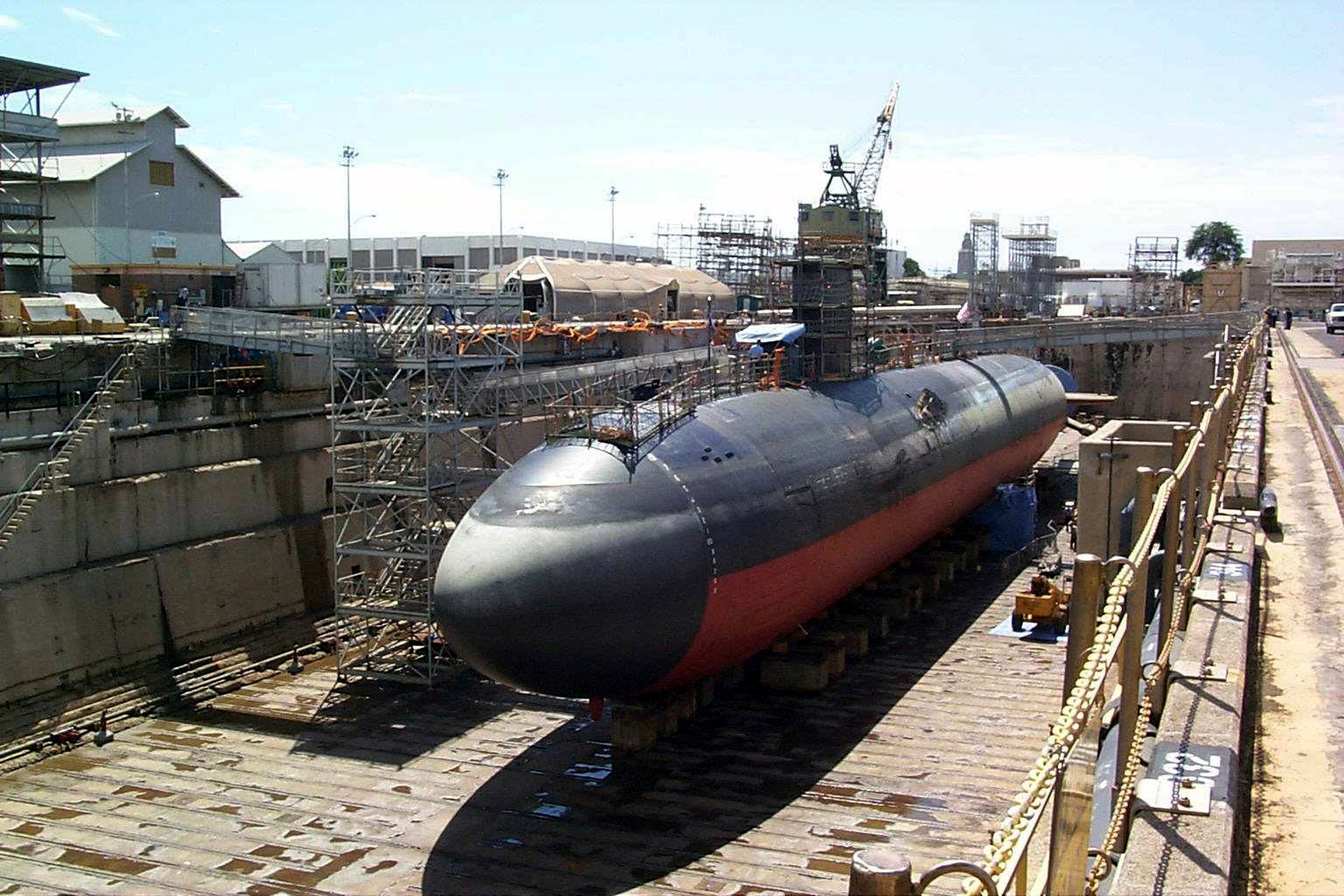
The Navy will also lengthen and deepen two drydocks at Pearl Harbor to support the Virginia Payload Module, and it will do some work to allow crane access to the drydocks. The yard includes an area that cannot support heavy cranes, but Moore said the engineers believe they can strengthen the seawalls there to allow for crane access to the drydocks.
Moore also added there will be “substantial” movement of the shops to create a better workflow at Pearl Harbor.





